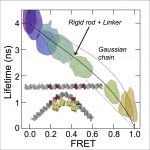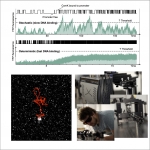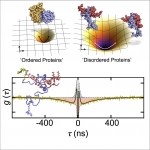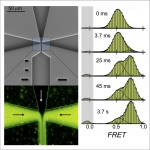Protein-DNA interactions
We use a three-step bottom-up approach to link the single-molecule events that trigger gene activation to the biological output of the genetic circuit. In the first step, we monitor the conformational dynamics of promoter DNA upon binding of transcription factors.






